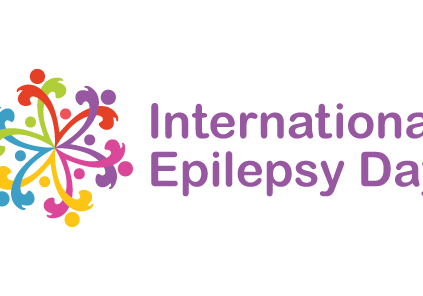Triheptanoin and Acetazolamide

Happy summer to everyone!
In this edition of Science with Sandra, I would like to highlight two manuscripts that have recently been published by Dr. Juan Pascual and his team at UT Southwestern.
The title of the first publication is “Combination of triheptanoin with ketogenic diet in Glucose transporter type1 deficiency (G1D)”.
The goal of this study was to investigate if triheptanoin (C7), and edible triglyceride of 7 carbon-heptanoic acid was compatible with the ketogenic diet using Glut1 Deficiency as a model disorder.
Why is this important? The ketogenic diet is the standard of care treatment, it offers an alternative substrate capable of fueling the tricarboxylic acid cycle (TCA) when glucose utilization is reduced. The TCA cycle is central for metabolism, it produces cellular energy and intermediates that are utilized for the formation of molecules such as lipids and amino acids which are necessary for the body’s normal function.
The principal ketone bodies derived from the ketogenic diet contain 4 carbons that when metabolized yield to two molecules of two-carbon acetyl coenzyme A. Coenzyme A is a central metabolic intermediate and its abundance in distinct subcellular compartments reflect the general energetic state of a cell. Despite the diet being a good source of acetyl coenzyme A, the diet is deficient because the fuels provided by ketone bodies lack anaplerotic potential; this means that they don’t replenish the carbons lost in the course of the TCA cycle. The TCA cycle is important for the production of adenosine triphosphate (ATP), the source of energy for use and storage at the cellular level. In contrast, metabolic substrates containing an odd number of carbons greater than 5 such as the C7 oil (triheptanoin), can fuel the TCA cycle while also fueling anaplerosis.
The authors state that there were two potential limitations to this study. First, some ketogenic diets contain medium chain fatty acids such as octanoate (8 carbon fatty acid) and decanoate (10 carbon fatty acid), both of which compete with C7 metabolism. Second, since heptanoate metabolism generates acetyl coenzyme A, C7 can potentially stimulate liver neoglucogenesis and this could decrease ketosis via insulin release. Neoglucogenesis is the synthesis of glucose from noncarbohydrate sources.
The ultimate goal of this study was to enable future combined or comparative studies using the ketogenic diet and C7, the reason being that for one third of Glut1 Deficiency patients the ketogenic diet is insufficient and it can be partly replaced by C7. On the other hand, treatment with only C7 may also be insufficient for some patients and they may benefit from the addition of the ketogenic diet.
The methods of the study included the enrollment of ten patients, the median age of the participants was 10 years and 6 of them were females, all of the patients had variants in the SLC2A1 gene. The participants had a wide spectrum of symptoms, variable combination of intellectual disability, epilepsy, ataxia, or episodic movement disorder.
The approach to this study included substituting a fraction of the fat in the ketogenic diet with C7 at the maximum tolerable dose (45% of total daily calories), in patients receiving a ketogenic diet prior to enrolment in this study. To determine the compatibility of the treatment with C7 oil and the ketogenic diet, several measures of compatibility were assessed. They measured blood beta hydroxybutyrate levels and seizure activity by EEG, video supervision and caretaker seizure rating, presence or absence, frequency, and lab work.
Each participant received a physical exam from medical records and provided a pre-treatment history including seizure frequency. They also received a daily physical exam including neurological examination. Patients were hospitalized in an epilepsy monitoring unit for 48 hours for administration of C7 and monitoring, and they also received nutritional assessment before starting the C7 supplement.
The results showed that most of the participants did not display significantly increased observable seizures during the study, two participants showed complete absence of seizures while taking C7 and one showed a 75% reduction of seizures while taking C7. Seizures returned for these three patients after C7 intake was stopped. EEG results were normal in 3 participants and abnormal in 7.
Additional results showed that there were no serious or unexpected adverse effects by the supplementation of the ketogenic diet with C7.
In summary, the team led by Dr. Pascual found that ketosis, clinical seizures, glycemia, and EEG, in four of the participants were good, indicating that C7 is compatible with the ketogenic diet for these individuals.
50 % or 4 of 8 participants with initial beta-hydroxybutyrate levels greater than 2 mM showed a significant reduction in ketosis after taking C7, which demonstrated that C7 and the ketogenic diet in these patients was not compatible. The remaining 50% of the participants responded well to the combination of the C7 oil with the ketogenic diet; patients continued in ketosis, seizures decreased and parents commented that patients’ expressive communication improved, as well as coordination.
Overall, the results from this study indicate that the possible supplementation of the ketogenic diet with C7 oil as a treatment for patients with Glut1 deficiency needs to be tailored to each patient depending on their levels of ketosis and their individual needs.
The second publication I would like to highlight is also from Dr. Pascual and his team. The title of the publication is “A concise study of acetazolamide in Glut1 deficiency (G1D) epilepsy”.
It is known that epilepsy is one of the most common symptoms in Glut1 Deficiency, typically patients don’t respond well to anti-seizure medication and some patients do not respond well to the diet as a way to control seizures.
Dr. Pascual and his team explained why they decided to study the effects of acetazolamide in Glut1 Deficiency. First, absence seizures which are characteristic in Glut1 patients, have been successfully treated in other epilepsies using acetazolamide in the 1950s. Second, experimental epilepsy models and Glut1 Deficient mice studies indicate that acetazolamide modifies the transmembrane gradient of chloride and this increases the inhibitory neuron activity which is diminished in Glut1 Deficiency. Third, acetazolamide stimulates glucose transport in cells and studies in Glut1 Deficient mice have shown that acetazolamide improves their locomotion.
Methods of the study: Dr. Pascual and his team developed an online survey that was sent 156 patients who are registered with the Glut1 Deficiency Foundation. In addition, the team conducted a retrospective study of 127 Glut1 Deficiency patients who are cared at the Rare Brain Disorders Program at UT Southwestern. A retrospective study is a study that looks back at patient data collected in the past. In the present study they looked at patient medical records. The requirements to participate in the survey were: To have a genetic or PET diagnosis of Glut1 Deficiency, have epilepsy and have the ability to provide information on the use of acetazolamide for at least 1 month.
Some of the information collected included demographics, type of epilepsy, degree of cognitive impairment, ataxia, epilepsy treatments like medications or ketogenic diets, and medications efficacy and side effects.
Results: 92 patients participated in the survey and from these 13 had received acetazolamide. All 13 patients met the requirements to participate in the study. Regarding the retrospective study, 17 patients out of the 127 patients whose medical records had been analyzed, had experienced seizures before treatment with acetazolamide and could participate in the survey. In total 17 patients participated in this study.
The results showed that the majority of participants developed epilepsy within 18 months of life. Among the types of electrographic epilepsies (abnormal EEG pattern) experienced were generalized and focal, and in one patient this was unknown. Those epilepsies were associated with absence, myoclonic or atonic-myoclonic and generalized tonic-clonic seizures.
Additional information collected revealed that 13 out of the 17 participants were receiving the ketogenic diet or a modified Atkins diet at the time of the study, the remainder 4 had previously been on the diet but the treatment was unsuccessful.
The range dose of acetazolamide that patients received was 75-1000 mg/day. 8 received a single treatment and 9 in combination with another antiseizure medication such as topiramate or zonisamide. Two of the participants had a vagus nerve stimulator, which is a device that helps to prevent or lessen seizures.
The results showed that 4 of the participants had not changes on seizure frequency after taking acetazolamide, 3 experienced a reduction in seizures less than 50%, 5 experienced a reduction greater than 50% and 5 were seizure free. None of the participants experienced an increase in seizures. There was no significant correlation for patients who experienced more than 50% seizure reduction and seizure freedom with age, type of mutation, type of diet or additional antiseizure medication taken together with acetazolamide. In addition, data obtained from blood studies did not show significant changes after taking acetazolamide. For most of the patients, blood tests were done when acetazolamide was started and then twice a year.
Finally, survey results indicated that 3 of the participants discontinued the use of acetazolamide after about 5.6 years of use due to lack of efficacy or side effects, while 3 participants continued the use either for migraine or dyskinesia rather than for seizure treatment.
Discussion: Dr. Pascual and his team stated that acetazolamide is approved by the FDA and has been used to trat epilepsy for over 70 years, however, it is not often used possibly because of adverse effects and potential gradual loss of efficacy, in addition to the development of new antiepileptic drugs.
According to reports of use of acetazolamide for the past 70 years, acetazolamide has been reported to reduce more than 50% of seizures in 48% of patients (368 patients) with different types of epilepsy.
Dr. Pascual explained that acetazolamide acts by enhancing inhibitory neuron activity but that it may not be the only mechanism by which this medicine might be acting in Glut1 Deficiency; it is possible that the increase of cellular glucose flux is also at play.
Finally, the authors conclude by saying that acetazolamide is tolerable and effective in a significant fraction of people with Glut1 Deficiency epilepsy who don’t respond to other treatments.
Dr. Pascual and his team have two other manuscripts that will be published soon; however, the abstracts are now available.
The first one is: “Isolation of the murine Glut1 deficient thalamocortical circuit: wavelet characterization and reverse glucose dependence of low and gamma frequency oscillations”. For this study, Dr. Pascual and his team designed a system in which they used brain slices of Glut1 deficient mice from the thalamocortical region of the brain. Dr. Pascual and his team had previously found that this is the brain region in which the seizure activity concentrates in Glut1 Deficiency patients. Brain slices were placed in a glucose bath and they observed that when glucose was present, the inhibitory neurons were able to control the activity of the excitatory neurons, therefore the seizure activity decreased. His plan is to use this system as a model to test mechanisms leading to seizure activity, as well as, to test some compounds that could possibly be used for treatment. This will be a great system to possibly use for drug screening studies.
The second publication is: “Maintenance of pig brain function under extracorporeal pulsatile circulatory control (EPCC)”. The study in this publication is related to the pig model Dr. pascual is trying to establish to study Glut1 Deficiency. This study wanted to find a way to separate the circulatory systems of the brain from the rest of the body in the pig, while keeping both functioning properly. The goal was to be able to study neural activity and its circulatory manipulation independently of most of the rest of the organism. They were able to surgically separate blood flow to the head from the rest of the body while having extracorporeal blood circulation, blood circulation controlled by a machine and delivered via a modified blood vessel. Pig’s brain activity remained unaltered or minimally perturbed, as well as brain oxygenation and other physiological processes. This study was required in order to move forward to use the pig as a model to study Glut1 Deficiency.
Thank you to Dr. pascual and his team for all their work trying to find better treatments for all the patients in our community!
If you have any questions or comments, please do not hesitate to email me to [email protected] and thank you for visiting our blog!


